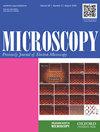How do plastids and mitochondria divide?
IF 1.8
4区 工程技术
引用次数: 9
Abstract
Plastids and mitochondria do not multiply de novo but though the division of pre-existing organelles. Here, we review the structural frameworks of the mechanisms of plastid and mitochondrial division. Then, we highlight fundamental issues that need to be resolved to reveal the underlying mechanisms of plastid and mitochondrial division. Plastids and mitochondria are thought to have originated from free-living cyanobacterial and alpha-proteobacterial ancestors, respectively, via endosymbiosis. Their evolutionary origins dictate that these organelles do not multiply de novo but through the division of pre-existing plastids and mitochondria. Over the past three decades, studies have shown that plastid and mitochondrial division are performed by contractile ring-shaped structures, broadly termed the plastid and mitochondrial-division machineries. Interestingly, the division machineries are hybrid forms of the bacterial cell division system and eukaryotic membrane fission system. The structure and function of the plastid and mitochondrial-division machineries are similar to each other, implying that the division machineries evolved in parallel since their establishment in primitive eukaryotes. Compared with our knowledge of their structures, our understanding of the mechanical details of how these division machineries function is still quite limited. Here, we review and compare the structural frameworks of the plastid and mitochondrial-division machineries in both lower and higher eukaryotes. Then, we highlight fundamental issues that need to be resolved to reveal the underlying mechanisms of plastid and mitochondrial division. Finally, we highlight related studies that point to an exciting future for the field.质体和线粒体是如何分裂的?
质体和线粒体不会重新繁殖,而是通过预先存在的细胞器的分裂。在这里,我们回顾了质体和线粒体分裂机制的结构框架。然后,我们强调了需要解决的基本问题,以揭示质体和线粒体分裂的潜在机制。质体和线粒体被认为分别通过内共生起源于自由生活的蓝细菌和α蛋白细菌祖先。它们的进化起源决定了这些细胞器不是从头繁殖,而是通过预先存在的质体和线粒体的分裂。在过去的三十年里,研究表明,质体和线粒体的分裂是由可收缩的环状结构进行的,广义上称为质体和线粒体分裂机制。有趣的是,这种分裂机制是细菌细胞分裂系统和真核细胞膜分裂系统的混合形式。质体和线粒体分裂机制的结构和功能彼此相似,这意味着它们自在原始真核生物中建立以来是平行进化的。与我们对其结构的了解相比,我们对这些部门机构如何运作的机械细节的理解仍然相当有限。在这里,我们回顾并比较了低等和高等真核生物质体和线粒体分裂机制的结构框架。然后,我们强调了需要解决的基本问题,以揭示质体和线粒体分裂的潜在机制。最后,我们重点介绍了相关研究,这些研究指出了该领域令人兴奋的未来。
本文章由计算机程序翻译,如有差异,请以英文原文为准。
求助全文
约1分钟内获得全文
求助全文
来源期刊

Microscopy
工程技术-显微镜技术
自引率
11.10%
发文量
0
审稿时长
>12 weeks
期刊介绍:
Microscopy, previously Journal of Electron Microscopy, promotes research combined with any type of microscopy techniques, applied in life and material sciences. Microscopy is the official journal of the Japanese Society of Microscopy.
 求助内容:
求助内容: 应助结果提醒方式:
应助结果提醒方式:


